Hello Everyone Your friend mspbro is back with anather blog.
Bitter gourd, scientifically known as Momordica charantia, is a tropical and subtropical vine widely cultivated for its distinctively bitter taste and numerous health benefits. Also known as bitter melon, this vegetable has a unique appearance, typically green with bumpy skin. It’s commonly used in Asian cuisine, where it’s cooked in a variety of dishes, or consumed as a juice or in traditional remedies. Beyond its culinary appeal, bitter gourd is renowned for its medicinal properties, packed with vitamins, minerals, and antioxidants.
In this blog, we will explore everything you need to know about bitter gourd cultivation, its benefits, and the vitamins it provides when included in your diet.
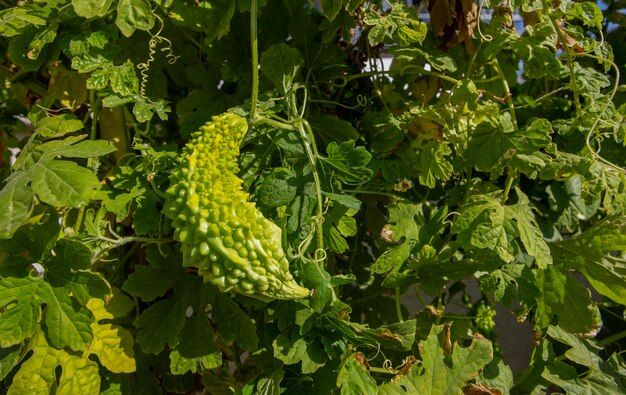
Bitter Gourd Cultivation: A Complete Guide
Bitter gourd is a warm-season vegetable that thrives in hot and humid climates, making it an ideal crop for tropical and subtropical regions. It is relatively easy to grow, provided the growing conditions are appropriate. The plant grows best when temperatures range from 25°C to 35°C (77°F to 95°F) and requires full sun to produce optimal fruit.
1. Selecting the Right Varieties of Bitter Gourd
Bitter gourd comes in different varieties, which can vary in terms of fruit size, shape, and bitterness. There are two primary types of bitter gourd:
Indian bitter gourd – This variety is often smaller, more oblong in shape, and extremely bitter.
Chinese bitter gourd – Larger and more elongated, with a milder bitterness.
Both varieties are commonly grown in different parts of Asia. For cultivation, choose a variety suited to your local climate. If you are unsure, consult with local farmers or agricultural experts for the best type for your area.
2. Soil Preparation
Bitter gourd prefers well-drained, fertile soil with a slightly acidic to neutral pH (between 5.5 and 7.0). Before planting, ensure that the soil is enriched with organic compost to improve its texture and fertility.
Here’s how to prepare the soil:
Clear the Land: Remove any weeds, rocks, or debris from the planting area.
Tillage: Plow the soil to a depth of around 10–15 cm (4–6 inches) to loosen it.
Fertilization: Mix well-rotted organic compost or manure with the soil. Incorporating a balanced fertilizer containing nitrogen (N), phosphorus (P), and potassium (K) can also improve plant growth.
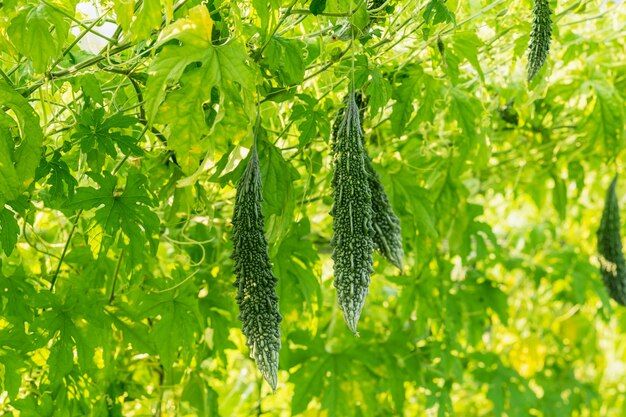
![bitter-melon-momordica-charantia-plant-organic-garden-its-turkish-name-is-mighty-pomegranate_861370-4141.jpg]
3. Sowing Seeds
Bitter gourd can be grown either from seeds or seedlings. Here's how you can do both:
From Seeds:
Soak bitter gourd seeds in water for 24 hours to encourage germination.
Plant the seeds 1–2 inches deep in rows, leaving space between each seed (approximately 6–8 inches).
A spacing of 4–6 feet between rows is ideal for the sprawling vine to grow.
From Seedlings:
You can purchase healthy bitter gourd seedlings from a local nursery.
Transplant them into your garden when the seedlings have grown to about 4–6 inches tall.
Space them at least 3 feet apart to allow for healthy growth.
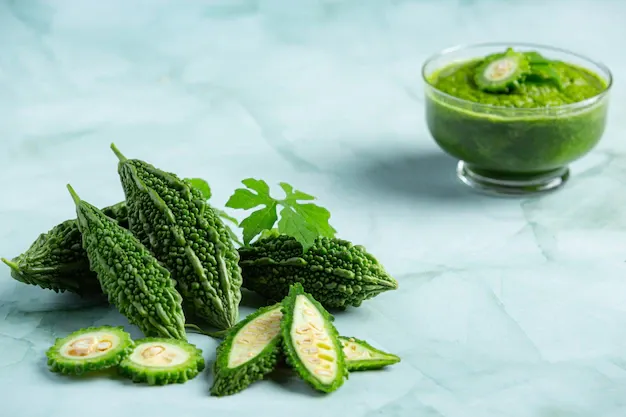
4. Care and Maintenance
Bitter gourd plants require regular care to thrive. Follow these tips to ensure successful cultivation:
Watering: Bitter gourd requires consistent watering, especially during the hot summer months. Keep the soil moist but avoid waterlogging, which can lead to root rot.
Pruning: Prune the plant regularly to promote healthy growth and ensure proper air circulation. Remove dead or yellowing leaves, and pinch back the tips of the vines to encourage lateral branching.
Support: Bitter gourd is a climbing plant, so it needs vertical support such as a trellis or fence to climb on. Provide sturdy support to prevent the vines from sprawling on the ground.
Mulching: Apply mulch around the base of the plant to retain moisture, suppress weeds, and maintain soil temperature.
5. Harvesting
Bitter gourd usually matures within 60 to 90 days after sowing. The fruit should be harvested when it reaches full size, but before it turns fully yellow and begins to ripen. The typical harvest time varies depending on the climate and variety, but generally, the younger and greener the fruit, the better its taste. If you let it ripen fully, it will become more bitter and less palatable.
To harvest:
Gently cut the fruits from the vine using pruning shears or a sharp knife. Be careful not to damage the vine.
6. Pest and Disease Management
Bitter gourd is prone to certain pests, including aphids, whiteflies, and caterpillars. Fungal diseases such as powdery mildew can also affect the plant. Here are a few organic methods to keep pests and diseases in check:
Use neem oil or insecticidal soap to repel pests.
Practice crop rotation to avoid soil-borne diseases.
Remove infected leaves promptly to prevent disease spread.
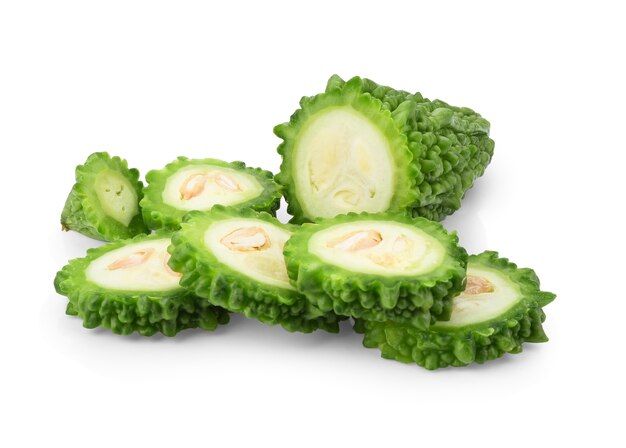
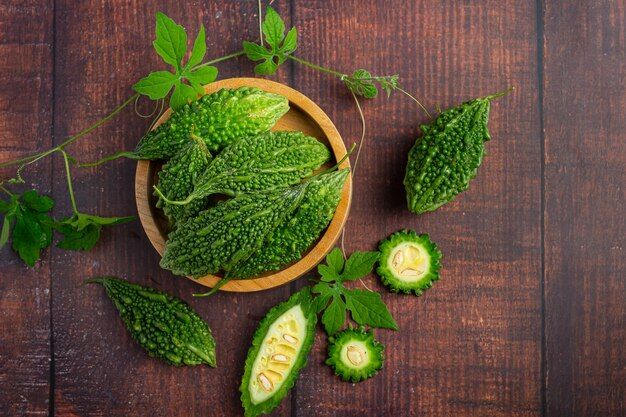
Health Benefits of Bitter Gourd
Bitter gourd has been used in traditional medicine for centuries, especially in India, China, and other parts of Asia. Its many health benefits are attributed to its rich content of bioactive compounds, vitamins, and minerals.
1. Improves Blood Sugar Control
Bitter gourd is well-known for its ability to regulate blood sugar levels. The bitter compound, called momordicin, found in bitter gourd has been shown to improve insulin sensitivity, thereby lowering blood sugar levels. This makes bitter gourd an important dietary component for those with Type 2 diabetes.
Some studies suggest that bitter gourd may even have the ability to reduce the need for insulin injections in diabetic patients. It helps in the absorption of glucose into the cells, thus controlling blood sugar levels naturally.
2. Boosts Immunity
Bitter gourd is packed with antioxidants and vitamin C, which are crucial for boosting the immune system. Vitamin C helps fight free radicals in the body, reducing the risk of infections. This powerful antioxidant also strengthens the body’s defense mechanism, making it less susceptible to diseases like colds, flu, and other viral infections.
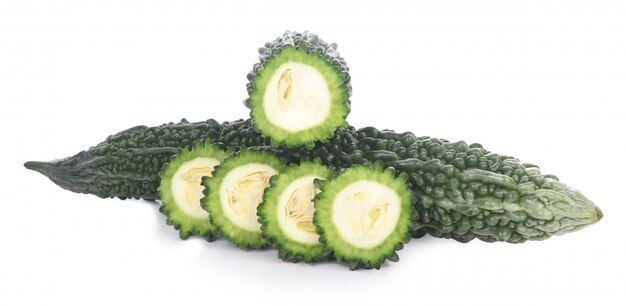
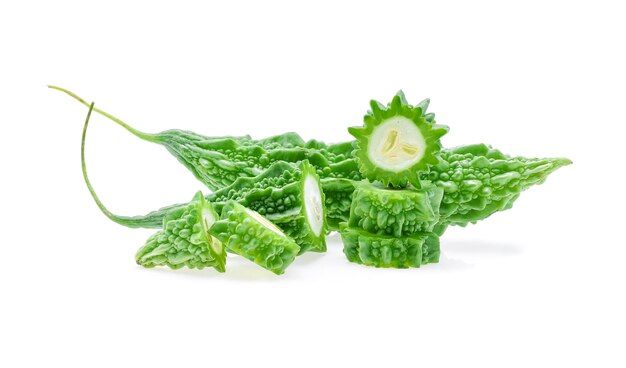
3. Supports Digestive Health
Bitter gourd aids in digestion and promotes the production of bile, which helps break down fats in the body. Its fiber content also improves bowel movement and prevents constipation. The bitter compounds in bitter gourd stimulate the digestive enzymes, helping the body absorb nutrients more effectively.
4. Promotes Skin Health
The antioxidants and anti-inflammatory properties in bitter gourd contribute to healthy skin by reducing acne, pimples, and blemishes. It also helps detoxify the skin by removing toxins from the body. Applying fresh bitter gourd juice to the skin is known to alleviate skin disorders like eczema, psoriasis, and fungal infections.
5. Supports Weight Loss
Due to its high fiber content and low calorie count, bitter gourd is a great addition to a weight-loss diet. It helps in boosting metabolism, reducing appetite, and enhancing fat-burning processes in the body. It also aids in reducing visceral fat, particularly around the abdominal area.
6. Enhances Liver Health
Bitter gourd plays a significant role in detoxifying the liver. It has been shown to improve liver function, reducing the accumulation of toxins in the liver. The presence of bioactive compounds in bitter gourd can also help reverse liver damage caused by alcohol consumption and fatty liver disease.
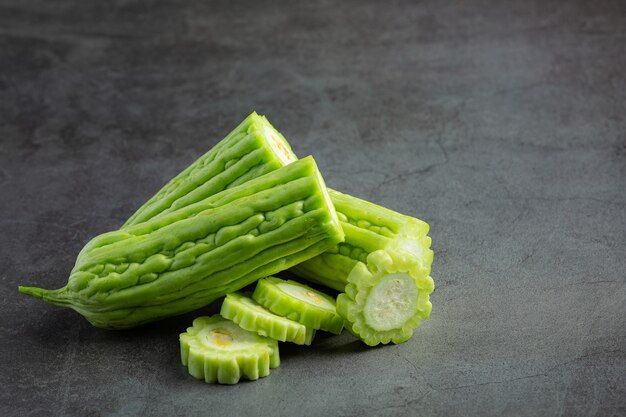
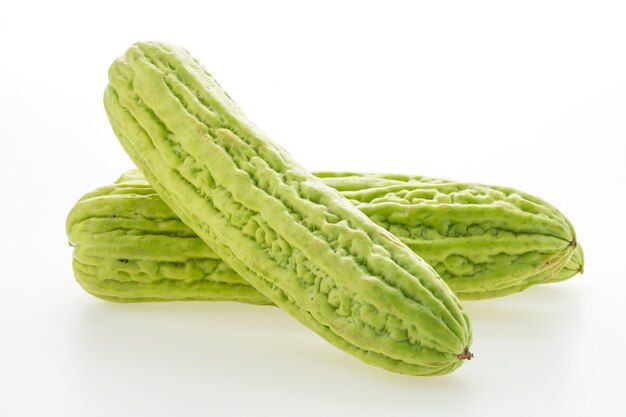
Nutritional Value of Bitter Gourd
Bitter gourd is a low-calorie vegetable but packed with nutrients. Here’s an overview of the vitamins and minerals found in bitter gourd:
Vitamins:
Vitamin C: Bitter gourd is rich in vitamin C, an antioxidant that helps support the immune system, skin health, and wound healing.
Vitamin A: The plant contains beta-carotene, which is converted into vitamin A in the body. Vitamin A supports eye health, skin, and immune function.
Folate (Vitamin B9): Folate is essential for healthy cell function, red blood cell production, and neural tube development in pregnant women.
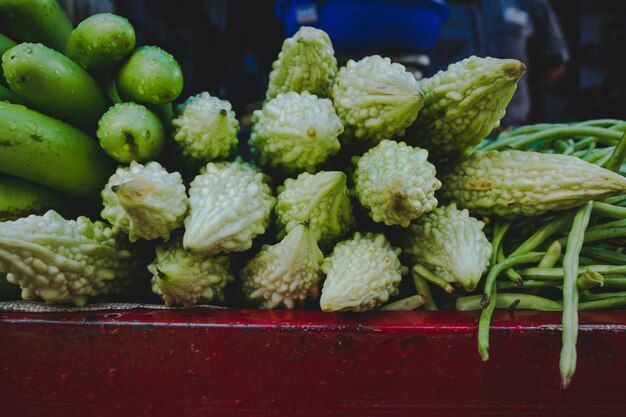
image source
Minerals:
Potassium: Bitter gourd is a good source of potassium, which helps in maintaining proper fluid balance, nerve function, and muscle contraction.
Iron: Iron in bitter gourd helps in red blood cell formation and boosts oxygen transportation in the body.
Magnesium: Magnesium plays an essential role in bone health, nerve function, and energy production.
Fiber:
Bitter gourd is high in dietary fiber, which aids digestion and helps maintain healthy cholesterol levels.
Antioxidants:
Bitter gourd contains a range of antioxidants, including flavonoids and polyphenols, that protect cells from damage caused by free radicals.
Bitter gourd is not only a unique and flavorful vegetable but also a powerhouse of health benefits. From its role in regulating blood sugar levels and promoting digestive health to its ability to support skin health and weight loss, bitter gourd is truly a superfood. Additionally, its easy cultivation process makes it an excellent crop for home gardeners or small-scale farmers in tropical or subtropical regions.

Whether you grow it in your backyard or buy it from the market, incorporating bitter gourd into your diet can offer significant health advantages. Be sure to consume it in moderation due to its strong bitter taste, and consider pairing it with other ingredients to balance its flavor.
So, why not give bitter gourd a try in your next meal? You’ll be adding a nutritious and health-boosting vegetable to your diet, all while reaping the benefits of its powerful medicinal properties.
I hope this helps in providing all the information you're looking for! Let me know if you'd like me to elaborate further or make any adjustments.
video credit complete agriculture YouTube channel.
So far Today...
Stay Home
Thanks for Your Time Friend.
♥♥♥♥♥♥
Ok
See you Again in a New blog.
Thanks for being with me.
Plese Follow Me......
@mspbro
★★To contact me★★
Subscribe My 3speak Channel https://3speak.online/user/mspbro
Follow me Twitter https://twitter.com/mdsumonpra
Add me Facebook https://www.facebook.com/sumon.mim84
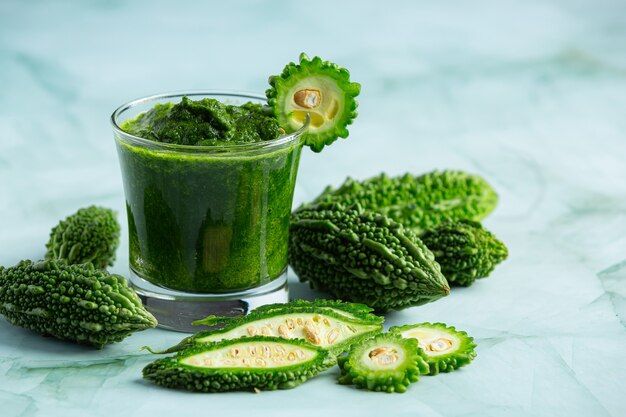
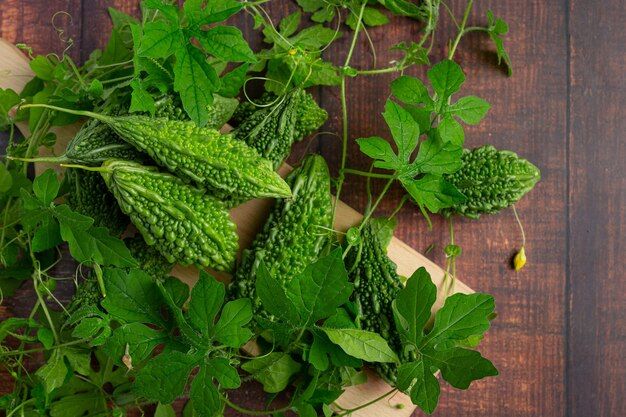
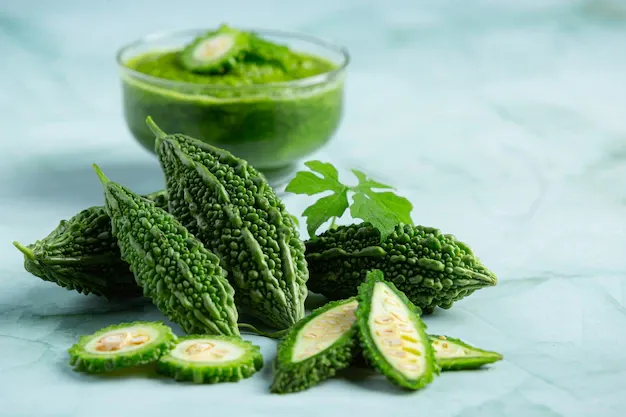
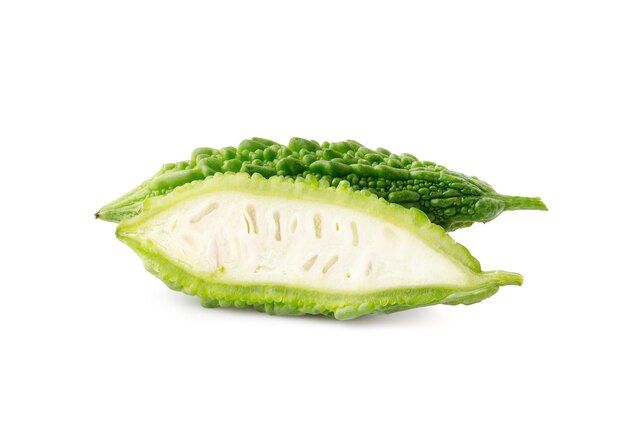
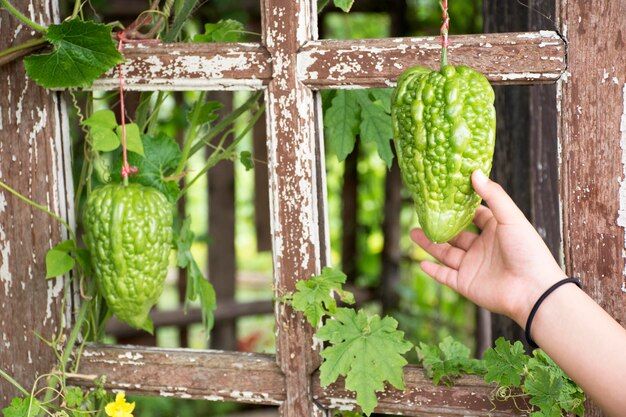
Bitter Gourd has many health benefits. Thank you for sharing.
@mspbro
Yes you wellcome dear